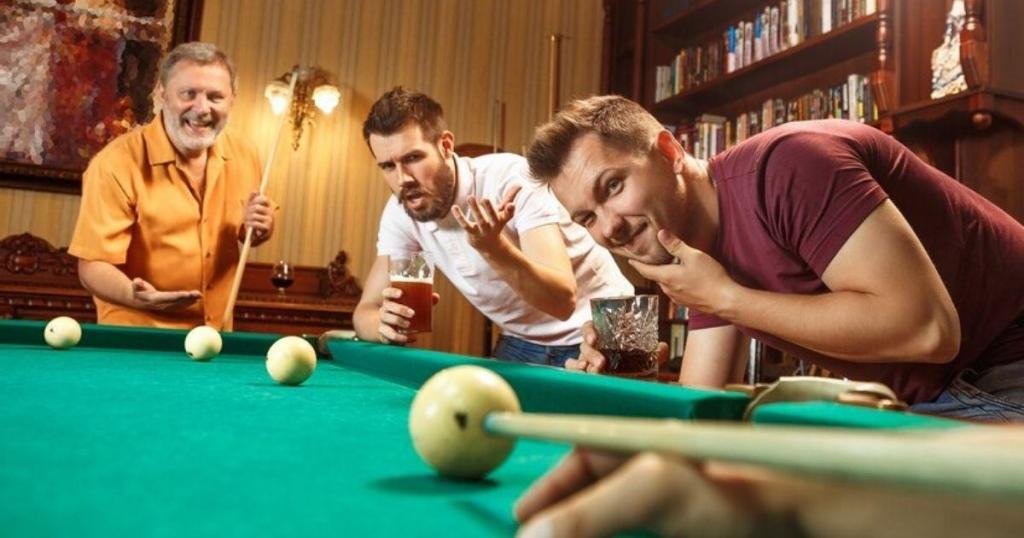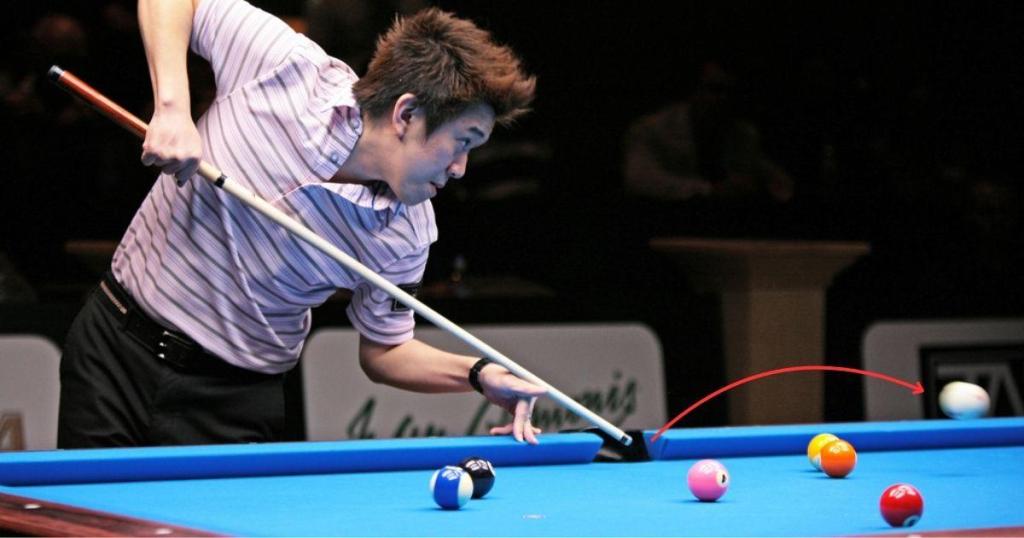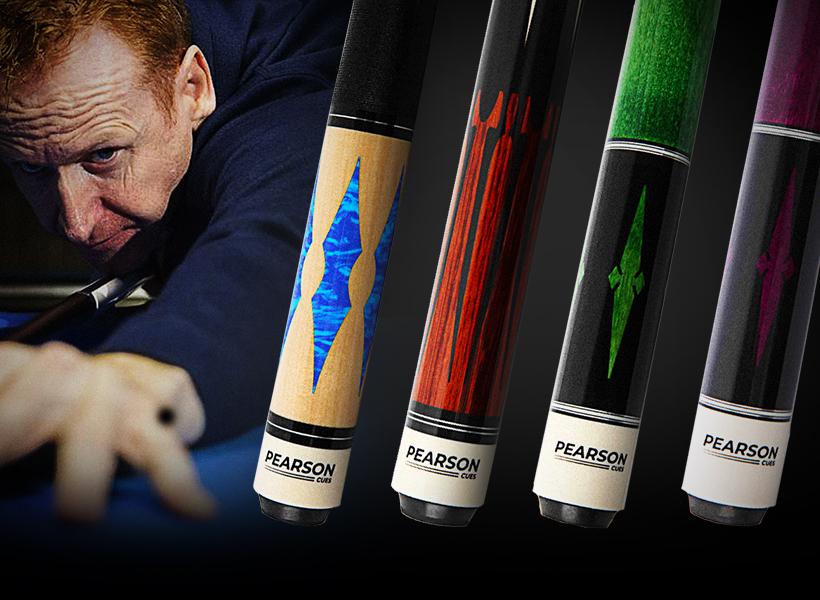Mastering the Art: Where to Hit Cue Ball?
Key Takeaways:
- Ever wondered how pro players make the cue ball dance? Discover the magic of hitting the ball in just the right spot and the surprising effects it can have on your shots.
- What if you could predict the outcome of every shot? Learn the three-step method that top players use to visualize their next move and execute with precision.
- Ready to elevate your game? Dive into advanced techniques that can transform your play and leave your opponents guessing.

Basic Control Techniques: Where to Hit the Cue Ball for Pool Perfection
Where to hit cue ball? Follow these 4 common techniques:
Center ball hit

The center ball hit is the most popular technique in pool games. It is the straight-line shot when you strike the cue ball dead center without spinning. It ensures accuracy and consistency in your gameplay.
How to shoot pool? When the cue ball is near the object ball, it’s easy to strike straight by center hit because there’s not enough time for the table surface to affect its spin.
However, if the cue ball is far from the object ball, you have to adjust the hitting point lower and harder to ensure it doesn’t have any spin when it hits the object ball.
Top spin (follow)

The top (follow) hit is the technique of making the cue ball move forward after hitting the object ball. It happens because the cue ball spins forward when it makes contact with the object ball.
For most follow shots, you should aim to hit the cue ball slightly above its center by about a tip’s width. Then, you adjust how hard you hit the cue ball based on how much follow you need for that shot.
If you need the cue ball to roll naturally but the object ball is very close to the cue ball, you’ll need to aim a bit higher, about a tip and a half above its center.
When you hit near the top of the cue ball, it spins faster than it rolls for a short moment, which is called overspin. So, if you need to hit the cue ball hard for a follow shot, aim near the top of the cue ball for a firm stroke.
Bottom spin (draw)

The bottom (draw) shot hits the cue ball below its center. This technique causes the cue ball to pull back from the line it’s traveling on, spinning backward when it hits the object ball.
Hitting the cue ball’s bottom makes it move faster than the top, creating a backspin. The lower you hit the cue ball, the more it spins backward.
The challenge of bottom shots is figuring out how low and hard to hit the cue ball to get the appropriate level of movement and distance when it hits the object ball. As the cue ball moves toward the object ball, the tablecloth creates friction, which tries to stop the cue ball from spinning backward.
So, getting a good draw shot is more accessible when the distance between the cue ball and the object ball is shorter.
Side spin (English)

The side spin( English) technique means hitting the cue ball on the left or right side. It adds left or right spin to the cue ball based on the shot control by the player in the game. This spin changes the cue ball’s path once it hits a cushion.
The more spin you add, the more the cue ball changes direction after hitting the cushion. The left spin makes it bounce off to the left more than without spin, and the right spin does the opposite.
2 Advanced Techniques for Cue Ball Control
Masse and Curve Shots

A masse and curve shot is when you make the cue ball curve instead of going straight. It’s one of the complex shots in the pool.
How to hit a pool ball? The technique is that instead of hitting the ball flat, you raise your cue over 45 degrees. A massive, curved shot is especially suitable if you’re stuck behind other balls and can’t hit the target directly.
You use left or right spin and angle your cue to curve the cue ball around obstacles and pocket the target ball. It’s a skillful way to escape challenging situations and keep playing.
Tip: Hit the cue ball from the top and raise your cue from 45 to 90 degrees for best cue ball control, depending on how far you want to go and how much curve you want to get.
Jump Shots

A jump shot in the pool is challenging but still more accessible than a masse shot. It allows you to make the cue ball jump over obstacles. To make it jump smoothly, you should hit the cue ball, aiming right in the center but slightly above and below it, at about a 45-degree angle.
Keep your grip light when hitting the cue ball when taking the jump shot, and use your regular stroke. If you want a higher and longer jump, give the cue ball more speed. Besides, it would help if you raised the cue for shorter distances or over balls close to the cue ball.
Tip: In the game with a jump shot, you’d better choose lighter cues, like a carbon fiber shaft, to make it easier to grip for a longer jump and learn how to use a training cue ball.
How To Plan Your Shot in 3 Steps

How to control the cue ball? There are 3 steps you should plan to make a perfect shot and control the cue ball.
Step 1: Visualize the Path
Visualizing the cue ball’s path when striking an object ball is essential before making any shot. It would be best if you considered factors including:
- The angle of the shot
- Obstacle on the table
- The target pocket
- Other ball’s position.
Visualizing the path creates a cue ball control diagram and lets you imagine where the cue ball and object ball will end after the shot, allowing you to plan your next moves accordingly.
Step 2: Object Ball Position and Pocketing
You can determine the position of the object ball based on the angles and path to the pocket. Which ball can you easily pocket successfully first? That is the position of the object ball.
Once you have determined the object ball’s position, you must consider any technique, such as spin or English. You may need to apply the cue ball to control the object ball’s path after contact.
Step 3: Cue Ball Positioning After the Shot
It’s essential to plan where the cue ball will stop after your shot. This could be the desired location after making contact with the object ball or the defense strategy of leaving your opponent in a difficult position.
When you reach the target position, you can get the following play, resulting in a high rate of successful pocketing. If not, you can make your opponent feel that it is difficult to find the correct position and fail in their turn.
That’s why you should carefully consider the cue ball’s speed and spin accordingly to determine its perfect position.
Frequently Asked Questions
Where must the cue hit a billiard ball?
In billiards, there are some points that the cue must hit below:
- Center
- Bottom
- Top
- Left & right side
At each point, the cue hit will create a different spin, distance, and angle to help players plan for their shot. Through it, they can make accurate and consistent determinations for successful gameplay.
Where is the best place to hit the cue ball on the break?
The best place to hit when breaking the ball depends on the game and the player’s strategies. In most pool games, hitting the center or slightly above the center of the cue ball is the typical technique. With that point, players must use muscular force enough to break the object balls.
Where should I hit the white ball in the pool?
There are six standard and advanced positions to hit the white ball:
- Center Ball Hit: Hit the cue ball in the middle for a straight shot.
- Top Spin (Follow): Hit above center for the cue ball to move forward after hitting.
- Bottom Spin (Draw): Hit the center below to allow the cue ball to spin backward after hitting.
- Side Spin (English): Hit on the sides for spin, affecting bounce off rails.
- Masse and Curve Shots: Curve the cue ball around obstacles with angled hits and spin.
- Jump Shots: With a light grip, make the cue ball jump over obstacles by hitting slightly above or below the center.
Where do you aim a cue ball?
Depending on the position of the object balls, you will aim a cue ball.
For example, when the object ball is near the pocket and the cue ball, you will aim at the center of the cue ball to make a straight shot.
However, if there are any obstacles, you should aim to the side, draw, or follow the cue ball to make it spin, curve, or change direction to meet the object balls.

Dave Pearson
Dave Pearson, the world's leading pool entertainer, is renowned globally as the ultimate exhibition player.
Boasting 20 world records endorsed by the prestigious Guinness Book of World Records, Dave established a legendary history in the sport industry.



